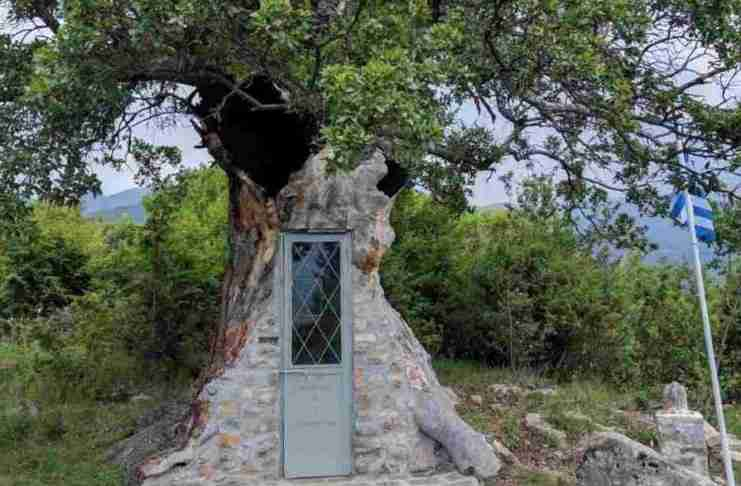"The Theogony" (Greek: Θεογονία, Theogonía) is an ancient Greek poem attributed to Hesiod, dating back to the 8th–7th century BC. Composed between approximately 730–700 BC, it is a seminal work that details the origins and genealogies of the Greek gods, encapsulating the early Greek understanding of the cosmos. Written in the Epic dialect of Ancient Greek and comprising 1,022 lines, "The Theogony" stands as one of the most important sources for understanding early Greek cosmology.
Description and Structure
Hesiod's "Theogony" is a grand synthesis of various local Greek traditions concerning the gods, organized into a coherent narrative that explains their origins and how they established their control over the cosmos. It is the first known Greek cosmogony—an account of the universe's origins and the gods who govern it. The poem begins with the primordial state of chaos, a dark and indefinite void from which all things emerge. This notion of theogonies—genealogies of the gods—reflects a deep-seated desire in Greek mythology to articulate the nature of reality as a unified whole, laying the groundwork for later philosophical speculations.
In the "Kings and Singers" passage (lines 80–103), Hesiod claims for himself an authority traditionally reserved for sacred kings. The poet asserts that the Muses have bestowed upon him the gifts of a scepter and an authoritative voice, symbols typically associated with kingship. While this does not suggest that Hesiod considered himself a king, it does imply that the authority of kingship is now vested in the poetic voice, particularly the voice that narrates "The Theogony."
Although often treated as a sourcebook for Greek mythology, "The Theogony" is more complex. It is formally a hymn invoking Zeus and the Muses, echoing the tradition of hymnic preludes used by ancient Greek rhapsodes in poetic competitions. Thus, it is important to understand "The Theogony" not as a definitive source of Greek mythology but as a snapshot of a dynamic tradition. The written form of "The Theogony" was established in the 6th century BC, although some parts, like the Typhon episode (lines 820–868), are believed to be later interpolations.
Near-Eastern Influences and Comparative Mythology
Hesiod's work is thought to have been influenced by Near-Eastern traditions, such as the Babylonian "Dynasty of Dunnum." However, these influences likely represent lingering traces from the Mycenaean tradition rather than direct contacts during Hesiod's time. The decipherment of Hittite mythical texts, such as the "Kingship in Heaven" text, offers parallels to Hesiod's narrative, particularly the conflict between Uranus and Cronus, reminiscent of the castration mytheme in the Hittite myth involving the figure of Kumarbi.
The Succession Myth
One of the central elements of "The Theogony" is the "succession myth," which recounts the overthrow of Uranus (Sky) by his son Cronus, and subsequently, the overthrow of Cronus by his son Zeus, who ultimately establishes permanent control over the cosmos.
Uranus fathered eighteen children with Gaia (Earth): the twelve Titans, three Cyclopes, and three Hecatoncheires (Hundred-Handers). Displeased with his offspring, Uranus hid them away within Gaia. In response, Gaia, distressed, fashioned an adamantine sickle and urged her children to punish Uranus. Only Cronus, the youngest Titan, dared to act. Gaia hid Cronus in ambush, and when Uranus came to lie with Gaia, Cronus castrated him with the sickle. This act liberated the Titans and allowed Cronus to assume command of the cosmos.
However, Cronus, like his father, was determined to maintain his power. A prophecy foretold by Uranus and Gaia warned that one of Cronus' children would overthrow him. To prevent this, Cronus swallowed each of his children—Hestia, Demeter, Hera, Hades, Poseidon, and Zeus—as they were born. But when Rhea, Cronus' wife, was pregnant with Zeus, she sought help from Gaia and Uranus to save him. They advised her to give birth to Zeus in secret, hiding him in a cave on Crete, while giving Cronus a stone wrapped in swaddling clothes, which he swallowed, believing it to be his son.
Zeus eventually grew up, forced Cronus to regurgitate his siblings, and waged war against the Titans in what became known as the Titanomachy. With the help of the Cyclopes and Hecatoncheires, whom he freed from their imprisonment, Zeus defeated the Titans and cast them into Tartarus. This victory solidified Zeus' rule over the cosmos.
The final threat to Zeus' power came in the form of the monster Typhon, born from Gaia and Tartarus. Zeus quickly defeated Typhon with his thunderbolt, securing his reign. By swallowing his first wife Metis to prevent the birth of a son who might overthrow him, Zeus ended the cycle of succession, ensuring his eternal rule.
The Genealogies of the Gods
"The Theogony" provides an extensive genealogy of the gods, tracing their origins from the primordial beings to the Olympian deities.
The poem begins with the spontaneous generation of four primordial beings: Chaos (Chasm), Gaia (Earth), Tartarus (the Underworld), and Eros (Desire). From Chaos came Erebus (Darkness) and Nyx (Night), who, in turn, produced Aether (Brightness) and Hemera (Day). Gaia gave birth to Uranus (Sky), the Ourea (Mountains), and Pontus (Sea).
Uranus and Gaia produced the Titans, the Cyclopes, and the Hecatoncheires. When Cronus castrated Uranus, his blood gave rise to the Erinyes (Furies), Giants, and Meliai (Ash Tree Nymphs), while his severed genitals, cast into the sea, gave birth to Aphrodite.
Nyx, by herself, produced numerous deities and personifications of abstract concepts, such as Moros (Doom), Thanatos (Death), Hypnos (Sleep), and Eris (Discord). From Eris, in turn, came many more abstract personifications, including Ponos (Hardship), Lethe (Forgetfulness), and Algea (Pains).
After Uranus' castration, Gaia mated with her son Pontus, producing sea deities, nymphs, and monsters. Their offspring included Nereus, Thaumas, Phorcys, Ceto, and Eurybia. These deities and their descendants include many notable figures in Greek mythology, such as the Nereids, the Graiae, the Gorgons, and Echidna.
Typhon, born from Gaia and Tartarus, married Echidna, and they produced several monstrous offspring, including Orthus, Cerberus, the Hydra, and the Chimera.
The Titans also produced many descendants. Oceanus and Tethys, for example, gave birth to the river gods and Oceanid nymphs, while Hyperion and Theia produced Helios (Sun), Selene (Moon), and Eos (Dawn). The Titan Cronus, by Rhea, fathered the Olympian gods: Hestia, Demeter, Hera, Hades, Poseidon, and Zeus.
Zeus married seven wives and fathered many children, both divine and mortal. His children include Athena, born from his head; Apollo and Artemis, by Leto; and Dionysus, by the mortal Semele. Zeus' marriages and affairs produced numerous gods and heroes, intertwining the divine and mortal worlds.
Prometheus and the Creation of Mankind
"The Theogony" also tells the story of Prometheus, a Titan who defied Zeus to aid humanity. At a feast with the gods and men, Prometheus sought to trick Zeus by dividing a slaughtered ox into two portions: one of bones wrapped in fat, and the other of meat hidden within the ox's stomach. Though Zeus recognized the trick, he chose the less desirable portion, establishing the custom that men would keep the best meat for themselves while sacrificing the bones to the gods.
In retaliation, Zeus denied humanity the use of fire, but Prometheus stole it and gave it to mankind. As punishment, Zeus ordered the creation of Pandora, the first woman, who unleashed suffering upon humanity. Prometheus himself was bound to a cliff where an eagle ate his liver daily, only for it to regenerate each night. He was eventually freed by Zeus' son, Heracles.
Manuscripts and Preservation
The earliest surviving manuscripts of "The Theogony" date from the end of the 13th century. One of the earliest examples is Vaticanus gr. 1825, dating to about 1310 based on watermarks. Approximately 64 manuscripts of "The Theogony" dating from 1600 AD or earlier are known.
Influence on Early Greek Philosophy
The universalizing impulse evident in "The Theogony" influenced the earliest Greek philosophers, who sought to articulate reality as a whole. Hesiod's work, with its emphasis on the necessity governing the order of things, laid the foundation for cosmological speculation. The concept of arche (origin or first principle) in Greek philosophy can be traced back to Hesiod's portrayal of Chaos as the primordial condition from which all things emerged.
Philosophers such as Thales and Anaximander built upon these ideas. Thales identified water as the first principle of all things, while Anaximander introduced the concept of the apeiron (infinite or boundless) as the source of the cosmos. In this way, Hesiod's "The Theogony" represents an important early step in the development of Greek philosophy.
Hesiod's "The Theogony" is more than a mythological text; it is a work that provides profound insights into the early Greek understanding of the cosmos and the divine. It is a reflection of the cultural and religious beliefs of ancient Greece, an attempt to order the universe through the power of the spoken word. By tracing the genealogy of the gods and their rise to power, Hesiod offers a vision of a world governed by divine necessity, a world in which the gods play a central role in the establishment and maintenance of cosmic order. The poem remains a foundational text for the study of Greek mythology and its influence on later philosophical thought.









